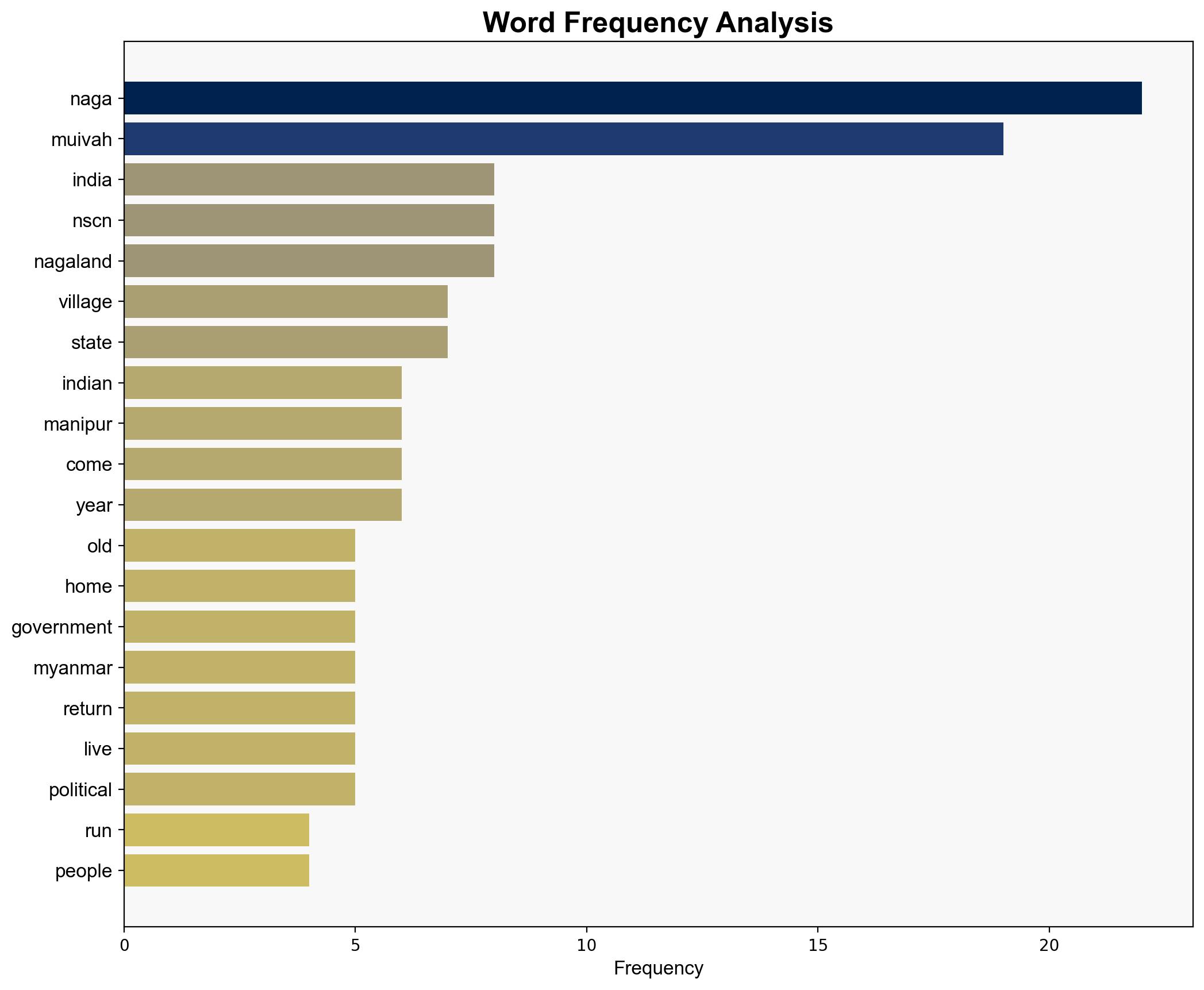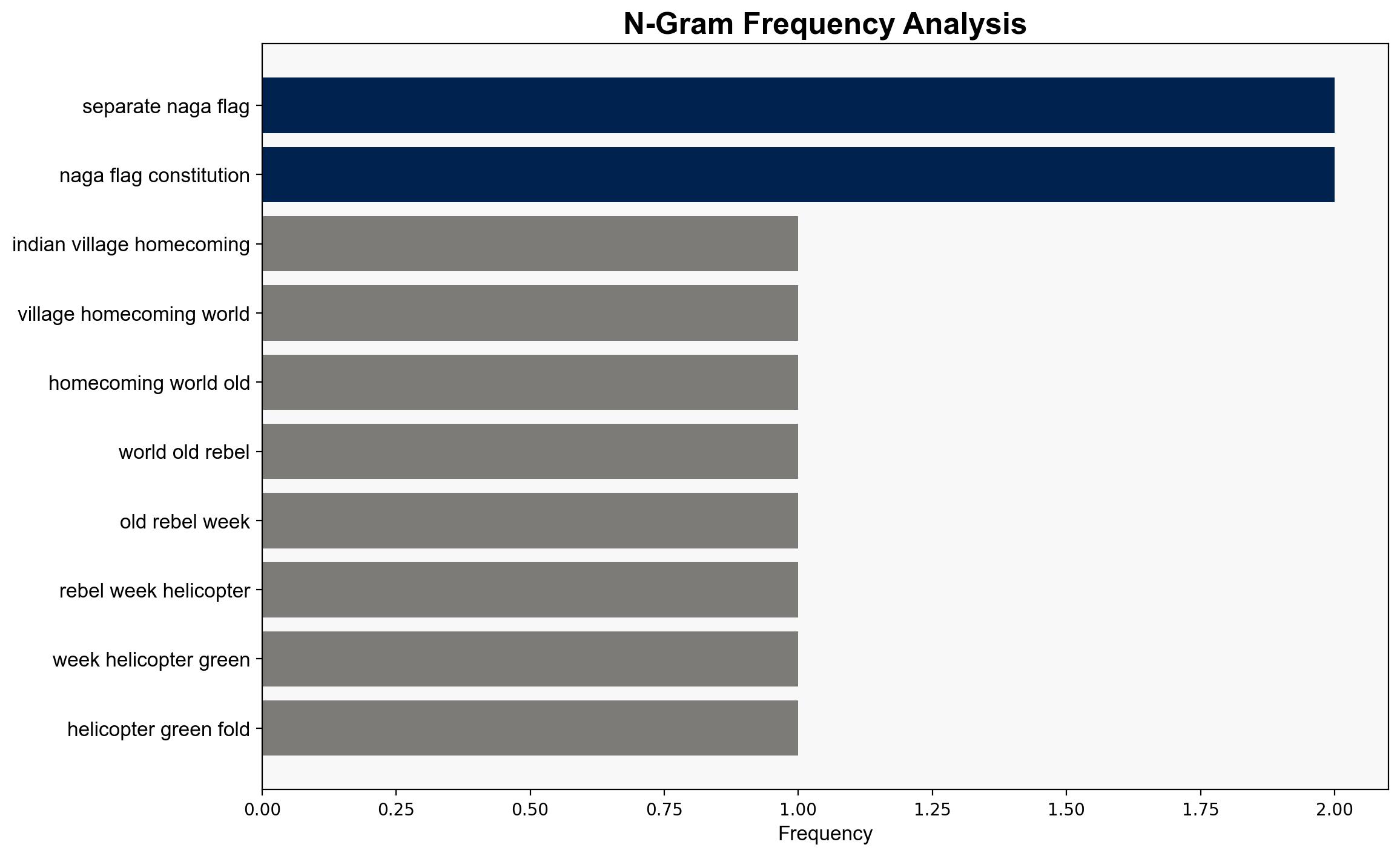The Indian village which saw the homecoming of one of the world’s oldest rebels – BBC News
Published on: 2025-10-28
Intelligence Report: The Indian village which saw the homecoming of one of the world’s oldest rebels – BBC News
1. BLUF (Bottom Line Up Front)
The most supported hypothesis is that Thuingaleng Muivah’s return to his village is primarily a symbolic gesture aimed at reinforcing his legacy and the cultural identity of the Naga people, rather than a strategic move to reignite large-scale insurgency. Confidence in this assessment is moderate due to the complex socio-political dynamics in the region. Recommended action includes monitoring the situation for any shifts in local sentiment or insurgent activity and engaging in dialogue with regional stakeholders to address underlying grievances.
2. Competing Hypotheses
1. **Symbolic Homecoming Hypothesis**: Thuingaleng Muivah’s return is a symbolic gesture to reinforce his legacy and the cultural identity of the Naga people. This hypothesis suggests that his return is more about personal and cultural significance rather than an operational move to escalate conflict.
2. **Strategic Mobilization Hypothesis**: Muivah’s return is a strategic move to mobilize support and potentially reignite insurgency efforts. This hypothesis posits that his presence could galvanize support for the Naga cause and lead to increased tensions or conflict in the region.
Using ACH 2.0, the Symbolic Homecoming Hypothesis is better supported due to the lack of immediate insurgent activity following his return and the emphasis on cultural identity in the narrative.
3. Key Assumptions and Red Flags
– **Assumptions**: The Symbolic Homecoming Hypothesis assumes that Muivah’s influence is primarily cultural and symbolic at this stage. The Strategic Mobilization Hypothesis assumes that there is a latent capacity and intent to escalate conflict.
– **Red Flags**: Any sudden increase in recruitment or mobilization activities in the region could indicate a shift towards the Strategic Mobilization Hypothesis. Additionally, any changes in rhetoric from Muivah or his associates should be closely monitored.
– **Blind Spots**: The potential for external actors to influence the situation is not fully explored, which could alter the dynamics significantly.
4. Implications and Strategic Risks
– **Cascading Threats**: A resurgence in Naga insurgency could destabilize the region, affecting neighboring states and potentially drawing in international attention.
– **Economic Implications**: Prolonged instability could hinder economic development and investment in the region.
– **Geopolitical Risks**: The involvement of neighboring countries or external powers in supporting either side could escalate tensions.
– **Psychological Impact**: The return of a prominent figure like Muivah could embolden separatist sentiments among the Naga population.
5. Recommendations and Outlook
- Engage in dialogue with regional leaders to address grievances and prevent escalation.
- Monitor for changes in local sentiment and insurgent activity, focusing on recruitment and mobilization efforts.
- Scenario Projections:
- **Best Case**: Muivah’s return leads to renewed peace talks and cultural reconciliation.
- **Worst Case**: Increased insurgent activity leads to regional instability and conflict.
- **Most Likely**: The situation remains stable with periodic tensions but no large-scale conflict.
6. Key Individuals and Entities
– Thuingaleng Muivah
– National Socialist Council of Nagalim (Isak-Muivah)
– Pradip Phanjoubam
– Sanjib Baruah
7. Thematic Tags
national security threats, regional focus, cultural identity, insurgency dynamics





